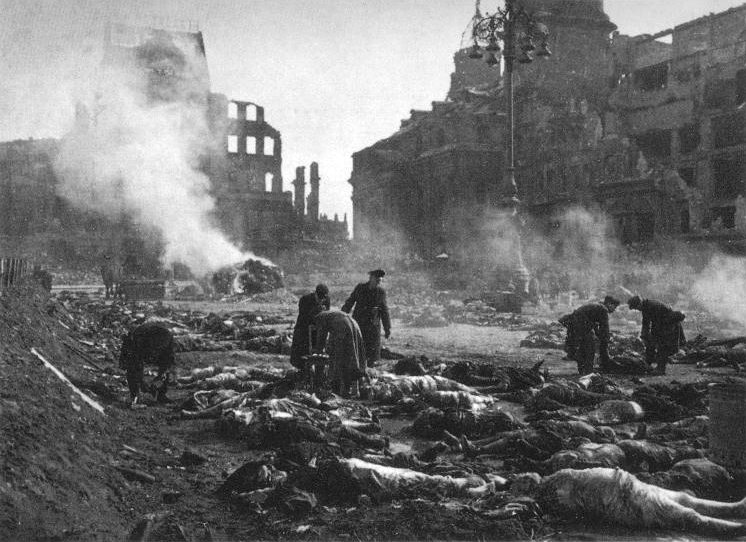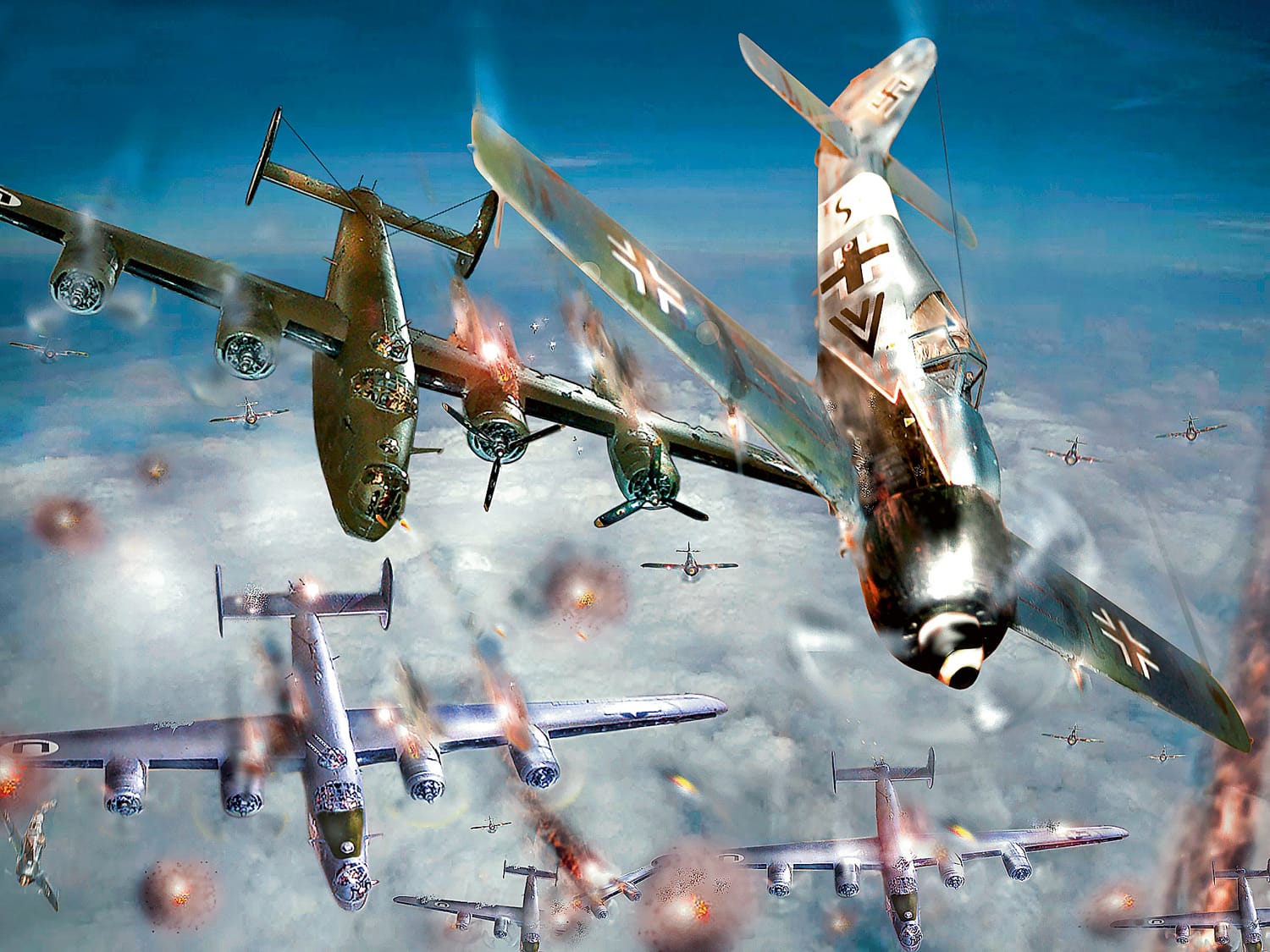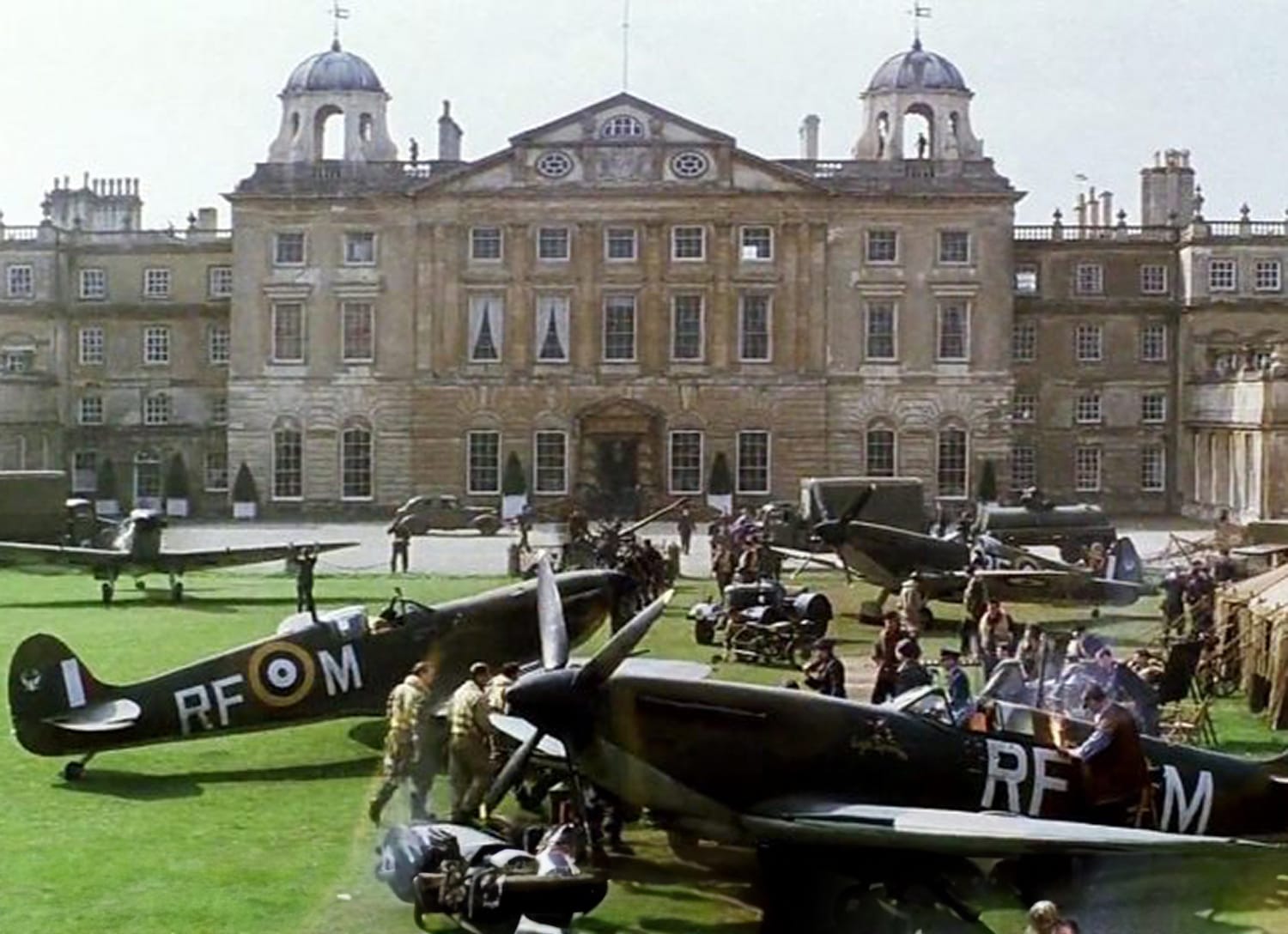Air raids in 1945: Why Dresden of all places?
Sacrifice for victory
First, there was a very clear attitude in the British Bomber Command of the Royal Air Force, which was also shared by the American officers of the US Army Air Force (USAAF), regarding the value of Baroque art treasures when it came to “higher aims”. This was already evident in the complete destruction of the time-honoured monastery of Monte Cassino in Italy by American bombs, which claimed the lives of countless civilians as well as completely irreplaceable art monuments. The German air force was also not afraid to sacrifice corpses and rubble of any kind for the hoped-for victory. “I do not personally regard the whole of the remaining German cities as worth the bones of one British Grenadier“ , was how an unimpressed Harris reportedly commented on the attack on Dresden, which had, however, not been a high priority for him. British Head of State Churchill and the allied chiefs of staff had pushed it through.
Motives from a British perspective
The official British documentation on the sixtieth anniversary of the Royal Air Force Bomber Command gives the motives from the British perspective. It can be read there:
“The Air Ministry had, for several months, been considering a series of particularly heavy air attacks on German cities with a view to causing such confusion and consternation that the hard-stretched German war economy and civil administration would break down and the war would end. The general name given to this plan was Operation Thunderclap, but it had been decided not to implement it until the military situation in Germany was critical. That moment appeared to be at hand. Russian forces had made a rapid advance across Poland in the second half of January and had crossed the eastern frontier of Germany. The Germans were thus fighting hard inside their own territory on two Fronts, with the situation in the east being particularly critical.
It was considered that Berlin, Dresden, Leipzig and Chemnitz—all just behind the German lines on the Eastern Front now—would be suitable targets. They were all vital communications and supply centres for the Eastern Front and were already packed with German refugees and wounded from the areas recently captured by the Russians. As well as the morale aspect of the attacks, there was the intention of preventing the Germans from moving reinforcements from the West to face the successful Russian advance. The Air Ministry issued a directive to Bomber Command, at the end of January. The Official History [quod vide the historians Frankland and Webster] describes how Winston Churchill took a direct hand in the final planning of Operation Thunderclap—although Churchill tried to distance himself from the Dresden raid afterwards. On 4 February [1945], at the Yalta Conference, the Russians asked for attacks of this kind to take place, but their involvement in the process only came after the plans had been issued.
So, Bomber Command was specifically requested by the Air Ministry, with Churchill’s encouragement, to carry out heavy raids on Dresden, Chemnitz and Leipzig. The Americans were also asked to help and agreed to do so. The campaign should have begun with an American raid on Dresden on 13th February [1945] but bad weather over Europe prevented any American operations. It thus fell to Bomber Command to carry out the first raid.“
The Soviet view of the attack
What does the Soviet side have to say about the later accusations that they had encouraged the attack on Dresden? It is clear that Winston Churchill had promised support to the Soviet dictator Stalin. However, in “wise” foresight of the coming confrontation of the “cold war”, not without ulterior motives. Later, albeit only after the outbreak of this ideological conflict, the Soviets then stated:
“The destruction of Dresden was a link in the chain of the moral intimidation of the German people, and at the same time it sent a message to the Soviet Union. The bombing attacks were part of the framework of the western powers’ targeting policy of proving their strength to the world. Dresden served as the blueprint for the subsequent attacks on Hiroshima and Nagasaki“.
Briefing for the attacks
The author Franz Kurowski has taken the following quote from a controversial book by the author Max Hastings, the content of which is expressly not included here due to the controversy. On the other hand, to the author’s knowledge this quote is undisputed, especially as there must be hundreds of witnesses.
In the afternoon, the crews of the British bombers are briefed. The briefing begins as follows:
“Dresden, the seventh largest German city and not much smaller than Manchester, is also far the largest unbombed built-up area the enemy has got. In the midst of winter with refugees pouring westward and troops to be rested, roofs are at a premium, not only to give shelter to workers, refugees and troops alike, but to house the administrative services displaced from other areas. At one time well-known for its china, Dresden has developed into an industrial city of first-class importance, and like any large city with its multiplicity of telephone and rail facilities, is of major value for controlling the defence of that part of the front now threatened by Marshal Koniev’s breakthrough.
The intentions of the attack are to hit the enemy where he will feel it most, behind an already partially collapsed front, to prevent the use of the city in the way of further advance, and incidentally to show the Russians when they arrive what Bomber Command can do.“
Analysis of the briefing
What did he say? “… and incidentally to show the Russians when they arrive what Bomber Command can do.“ Now we are getting closer to Winston Churchill’s intentions. After all, this was even explicitly stated to the crews of the Lancaster bombers as a justification.
However, the statements in the briefing on the city’s production capacity are completely unfounded. Dresden an “industrial centre?” Dresden did have production facilities, but most of them were small to medium-sized companies, especially those in the city centre. They were of little importance to the war effort. The situation was different regarding the Zeiss-Ikon works in Dresden-Striesen on the outskirts of the city and the two Sachsen factories in Radeberg and Niedersedlitz. However, these were not even attacked and therefore remained completely undamaged. Not a single one of Dresden’s 18 railway stations was in the primary target area of the first British air raid of the bombing-night – although the entire historic old town was! The British were obviously not interested in railway connections, telephone systems or industrial plants – but in the people of Dresden. On whom they were willing to make an example.
Indescribable inferno – “optimised” hell mix
The mixture of explosive and incendiary bombs, meticulously researched by British experts, pyrotechnicians, firefighters and scientists, and the deliberately created firestorm ignited an inferno that the Allies had been familiar with since the air raids on Hamburg in the summer of 1943, which had since been “optimised” and was therefore now finally indescribable. The completely coldly calculated callousness with which this happened is inhumane in a way that is unfortunately not unprecedented. There are other terrible testimonies of unimaginable callousness during this time. Even if any judgement is forbidden in view of the horror, it must be seen that unscrupulousness in this respect was not limited to just one nation.
The fact that the complete annihilation of entire cities and their inhabitants was planned from the outset as a calculated demonstration of strength with regard to the distribution of power after the war and therefore had more than just military intentions can be seen from a speech that was given in mid-1944 during the initial planning of Operation Thunderclap. At that time, Berlin was the main target, but later Dresden, Chemnitz, Nordhausen and Leipzig were also targeted. The German capital was then also repeatedly attacked by the Royal Air Force and the 8th USAAF, particularly devastatingly on 3 February 1945, 26 February 1945 and 18 March 1945 by American bombers.
Sidney Bufton, British Director for Bomber Operations, said about the intention of “Thunderclap” on 15th August 1944:
“[…] It is suggested that a spectacular and final object lesson to the German people on the consequences of universal aggression would be of continuing value in the post-war period.
[…] The attack must be delivered in such density that it imposes as nearly as possible a 100% risk of death to the individual in the area to which it is applied. […] The total weight of the attack must be such as to produce an effect amounting to a national disaster. The target chosen should be one involving the maximum associations, both traditional and personal, for the population as a whole. Considerations of economic destruction must not be permitted to influence the selection of the target.
[…] The target should be one possessing the maximum traditional and personal associations for the German people as a whole. The administrative and governmental centre of Berlin best fulfils these conditions. […] The population of this area is extremely high. […] If an attack on the scale envisaged were accurately delivered against the two and a half square miles of Berlin […] the whole of the population of greater Berlin would be witness to it and would be subjected to the immediate threat of a similar disaster.
[…] It would convince our Russian allies and the Neutrals of the effectiveness of Anglo-American air power. When allied forces had occasion to occupy, or neutral representatives to visit Berlin, they would be presented to a long continuing memorial to the effects which strategical bombing had produced in this war and could produce at any time again.”
Source: Lukas Willmy – Operation Donnerschlag: Imperiale Aufstandsbekämpfung aus der Luft und das „Morale Bombing“ deutscher Städte durch die ROYAL AIR FORCE 1945. Pages 410 / 375 / 376 / 388

Winston Churchill, Britain’s wartime prime minister since 10 May 1940, had the following thoughts on the past First World War in his book “Thoughts and adventures” in 1932:
“But all that happened in the four years of the Great War was only a prelude to what was preparing for the fifth year. The campaign of the year 1919 would have witnessed an immense accession to the power of destruction. Had the Germans retained the morale to make good their retreat to the Rhine, they would have been assaulted in the summer of 1919 with forces and by methods incomparably more prodigious than any yet employed. Thousands of aeroplanes would have shattered their cities. Scores of thousands of cannon would have blasted their Front. […] The campaign of 1919 was never fought, but its ideas go marching along. […] Death stands at attention. […] He awaits only the word of command. […] Next time the competition may be to kill women and children, and the civilian population generally, and victory will give herself in sorry nuptials to the diligent hero who organises it on the largest scale.“
Spoken in the year 1932. Accomplished in the year 1945.
Those “ideas“ cost the lives of at least 570,000 defenceless people, perhaps as many as 1,000,000 of them.
Ebenfalls interessant…

The final kill of the ace of aces, Erich Hartmann, the most successful fighter pilot of all time
Dangerous encounter in the airIn March 1945 a Russian bombing attack on Prague was reported. Hartmann took off with four Me 109s. A Russian formation…
Weiterlesen
Sturmjäger – cuirassiers of the air
Air battle over Germany: the attack on hydrogenation plants and aircraft factoriesIn the early hours of the morning of 7th July 1944 756 B-17 Flying…
Weiterlesen
That’s how historic air battles get botched by Hollywood
Time and again the ignorance and nonchalance with which even highly renowned directors simply ignore historic details is fascinating. They do this in spite of…
Weiterlesen